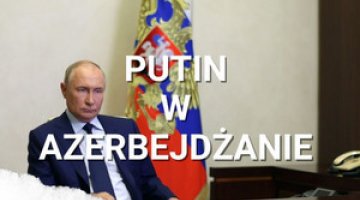The Ukrainian attack in the Kursk Oblast. Military consequences and Ukraine’s objectives
Within six days of their military action, after initially encountering no serious resistance, Ukrainian forces have succeeded in occupying Russian territory in the Kursk Oblast, having advanced more than 20 km to the north and up to 10 km to the east. They have gained control of at least 20 villages in the Korenevsky and Sudzhansky districts and seized part of Sudzha, a town of 5,000 inhabitants. At the same time, Ukrainian sabotage and reconnaissance groups (SRG) have conducted raids even deeper into Russian territory (up to about 30 km near the village of Kromskiye Byki), but these operations have not expanded the area under Ukrainian control. Further Ukrainian advances have been halted by Russian units gradually moving into the combat zone since 9 August, although the latest reports indicate that they have failed in some areas.
Around 3,000 to 5,000 Ukrainian soldiers from a group estimated at a total of 6,000 to 10,000 military personnel, the core of which consists of contingents drawn from four brigades, entered Russian territory. Almost immediately after seizing the border area, Ukrainian engineering formations started building a fortified zone centred in the village of Basivka located on the Ukrainian side of the border.
On 9 August, the Russian government introduced an ‘anti-terrorist operation regime’ in the Bryansk, Kursk, and Belgorod Oblasts that border the unoccupied part of Ukraine; reinforcements from the Moscow Military District and the Leningrad Military District, as well as from less active sections of the battlefront in Ukraine (mainly from the reserves of the group operating in the Kharkiv, Zaporizhzhya, and Kherson Oblasts), arrived in the Kursk Oblast combat zone. In the following days, Russian forces partly succeeded in halting further Ukrainian advances in this region and have also recaptured two villages on the flanks of the Ukrainian thrust: Martynovka in the east and Snagost’ in the west. The fighting for Sudzha continues as Ukrainian forces press northwards towards Korenevo and Lgov. The Russian government has been evacuating people from the border areas, while south of Kurchatov, the site of the Kursk Nuclear Power Plant, Russian forces have started building fortifications.
Ukrainian forces (mainly SRGs, and occasionally small mechanised columns) have made moves aimed at stretching Russian activity south of the current combat area. They have crossed the border twice in the Belgorod Oblast (on 10 August in the Grayvoronsky district and on 12 August in the Krasnoyaruzhsky district) and once in the Kursk Oblast (on 11 August in the Belovsky district), but have retreated after encountering resistance.
Commentary
- The attack by the Ukrainian forces indicates that they intend to maintain and, if possible, expand the area under their control on Russian territory while striving to retain their operational flexibility and avoid being drawn into positional battles. The fact that a large part of the Ukrainian forces has so far not been involved in the fighting makes it easier to achieve this. It is conceivable that Ukrainian forces will strike elsewhere if they fail to make further advances in their current area of incursion. However, it is increasingly unlikely that they will find another poorly protected section on the Russian side of the border.
- The Russian military has opted not to respond quickly to the incursion into its territory by depleting its capabilities in Ukraine; in fact, any further Ukrainian actions are unlikely to compel it to take such measures. The core of the Russian forces deployed to the Kursk Oblast consists of newly-formed subunits; conscripted soldiers have also been sent to the combat zone (permitted under the ‘anti-terrorist operation regime’), leading to an apparent lack of proper coordination among Russian troops.
- The Ukrainian military action in the Kursk Oblast has so far had no effect on Russian activity in Ukraine, which, contrary to some reports, has remained at the same level as in previous weeks, as confirmed by the Ukrainian General Staff and local commands. Russian forces have continued their assault in the Donbas; according to the Ukrainian command, they are also likely preparing further offensive actions in the Kharkiv region. It should be noted that, compared to the operations being conducted in Ukraine, the current fighting in the Kursk Oblast is a peripheral development on a small scale, involving forces that are significantly smaller than the groups on any section of the battlefront in Ukraine. The fact that the Ukrainian attack on Russian territory appears to be a much more serious undertaking than it actually is stems from the activity of sabotage and reconnaissance groups operating outside the Ukrainian military’s main grouping, which have succeeded in sparking panic among the Russians.
-
The Ukrainian government has remained silent on the operation’s objectives and progress; this allows it to claim the incursion as a success regardless of its outcome, even if Ukrainian forces withdraw from the seized territories. The thrust into the Kursk Oblast appears to be designed to demonstrate to the West that Ukraine has the potential to win the war militarily and thus encourage the Western partners to provide further financial and military assistance. Russia’s failure to respond in any meaningful manner has also demonstrated that its ‘red lines’ are, in fact, a fiction and that there are no obstacles to transferring long-range weapons to Ukraine and allowing it to strike Russian territory, including targets beyond the border areas. Moreover, if the ongoing operation is successful, pressure from the West on Ukraine to enter into peace talks may diminish.
-
Another aim of the ongoing Ukrainian operation is to boost the population’s morale and divert its attention from the difficult situation in the other sections of the battlefront, especially in the Donbas. Since the failure of the Ukrainian offensive in the autumn of 2023, the public has become less confident of victory and more willing to start negotiations with Russia. According to a survey by the Kyiv International Institute of Sociology (KIIS), last May 57% of respondents favoured entering into talks with Russia, while 38% were opposed. The level of acceptance for territorial concessions has also been slowly increasing: according to the KIIS survey from last May, 32% of Ukrainian people would be willing to accept such concessions, compared to only 10% in May 2023. Since the Russian attack on Kyiv’s Okhmatdyt hospital on 9 July in particular, former politicians, bloggers, and social activists have increasingly called for talks to begin, even if the country’s 1991 borders are at stake. In early August, President Volodymyr Zelensky declared that a referendum on territorial concessions in exchange for peace was possible “if the people wanted it.” However, on 9 August, the head of the Office of the President, Andriy Yermak, stated that he saw no point in negotiating with Russia and that, for Ukraine victory means recovering the occupied territories.
- The ongoing operation has been praised domestically, but the Ukrainian military’s spectacular success is fraught with risk. In the event of failure, if the grouping is destroyed, it could lead to a devastating defeat. This, in turn, would dampen the jubilant public mood that has gripped Ukraine and undermine confidence in the competence of the country’s civilian and military leadership.




